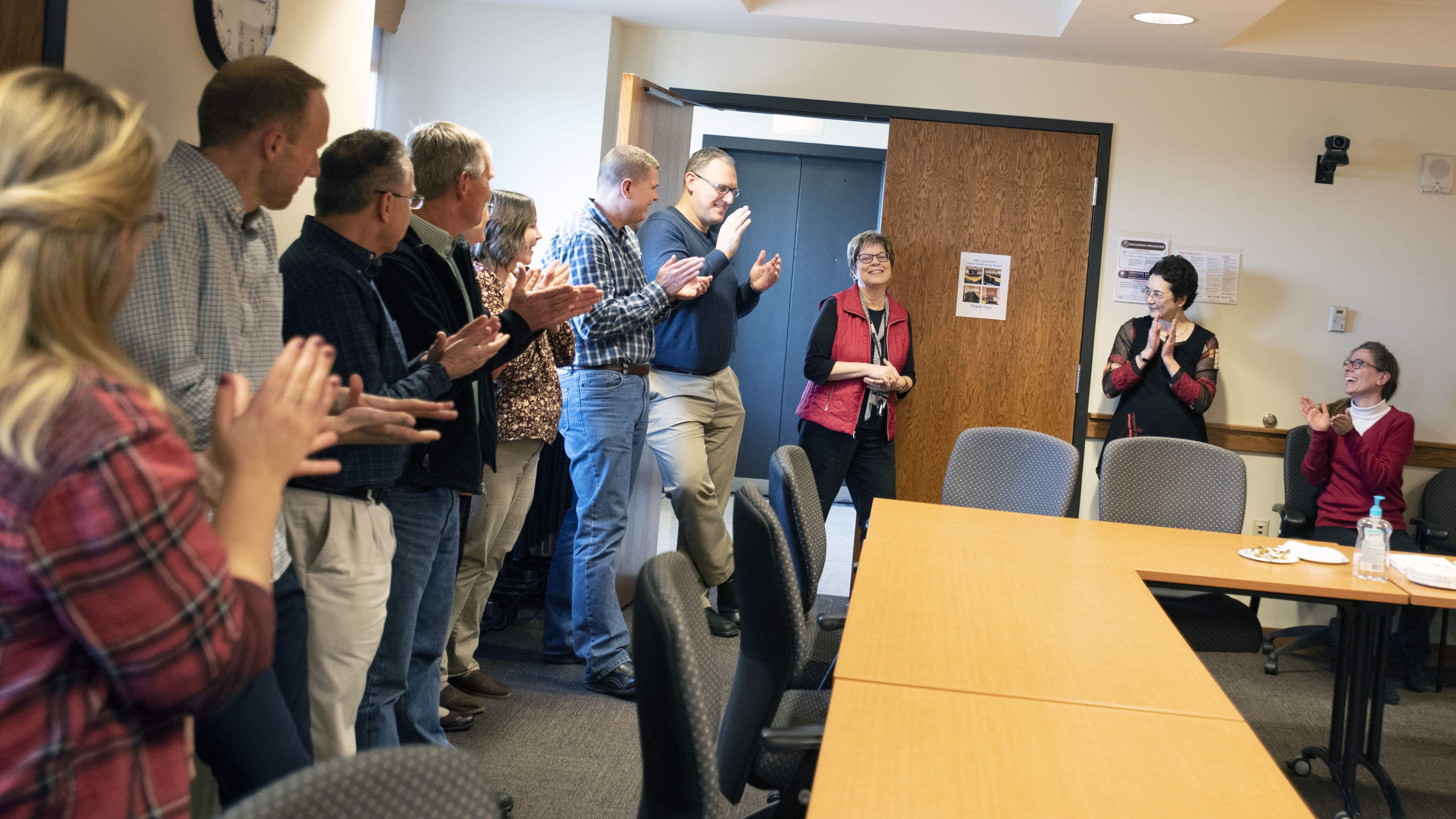
After 35 years, Ann Fiedler has retired from her post as an administration associate for the National Drought Mitigation Center. Though she wanted her last day to be marked without any pomp and circumstance, the center hosted a surprise going away party in her honor anyway.
In late December, nearly 20 of the center’s staff filled Hardin Hall 901, sharing cake and stories with Fiedler.
“I’ll miss the people the most. Definitely the people,” she said later. “I’ve been lucky to work with great people who were professional and pleasant to work with. They appreciated my efforts to do the job well.”
Fiedler got her start with the University of Nebraska-Lincoln on Aug. 28, 1984, when she accepted a position working part-time for the Agricultural Engineering Department, which later became Biological Systems Engineering. At the time, the part-time flexible work allowed her to accommodate her home and family schedule.
“I recall one of my first days on the job, I met the department head, and he was very interested that I was from Lincoln and raising a family here,” Fiedler said. “He asked if I thought I’d be around while, and of course I said yes.
“I had no idea at the time it would turn into 35 years.”
In 2000, then NDMC director Don Wilhite asked Fiedler if she’d be interested in working part-time for the center, also housed in Chase Hall. She accepted, working the mornings in BSE and the afternoons in NDMC. In 2004, she shifted full-time to the center within the School of Natural Resources for the opportunities offered there.
During her time with the university, Fiedler saw a lot of changes. The NDMC staff grew from seven to more than 20, and the workload grew, too. In 2006, the School of Natural Resources’ components — what were formally separate majors, departments and centers — all moved under one roof.
“My favorite memory in SNR is moving into Hardin Hall and coming together as a department,” she said. “The team meetings for planning and coordinating and endless packing required cooperation and patience from everyone. There was much effort by many people but it was worth it to finally move into the newly renovated space.”
The biggest challenge over the years, though, were the changes in technology.
“My first computer had the black monitor with the bright green text and two 5¼ flopping disk drives, probably one for the software program and one for the data. The printer was a dot matrix. We had memos instead of emails for communicating with others in the same building or across campus. There was no Internet.
“The technology through the years presented numerous headaches and frustrations, having to learn and re-learn with every update," she said. "I have to admit that I liked the challenges, and I’m glad to have been a part of it.”
Now, she’ll be shifting her focus to her future. One with few plans as yet.
“Not having to be at a certain place at a certain time on a certain day sounds just fine to me for the near future,” she said.
She, of course, has time to decide.
Shawna Richter-Ryerson, Natural Resources